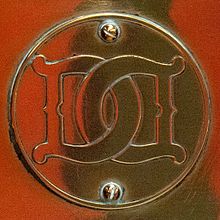Automobiles Darracq France
| Société en commandite | |
| Industry | Cycle and Automotive |
| Fate | sold to A.Darracq & Company Limited in 1902 |
| Founded | February 1897 |
| Headquarters | Suresnes, France |
|
Key people
|
Alexandre Darracq, founder |
| Products | Automobiles |
 |
|
| Société Anonyme | |
| Industry | Automotive |
| Founded | 1916 |
| Founder | A Darracq and Company (1905) Limited (London) |
| Defunct | 1959 |
| Headquarters | Suresnes, Paris, France |
| Parent | |
Automobiles Darracq France was a manufacturer of motor vehicles and aero engines in Suresnes, near Paris. The enterprise, known at first as A Darracq et Cie, was founded in 1896 by successful businessman Alexandre Darracq.
In 1902 he sold his new business to a privately held English company named A Darracq and Company Limited, taking a substantial shareholding and a directorship himself. He continued to run the business from Paris but was obliged to retire to the Côte d'Azur in 1913 following years of difficulties that brought his business into very hazardous financial circumstances. He had introduced an unproven unorthodox engine in 1911 which proved a complete failure yet he neglected Suresnes' popular conventional products. France then entered the first World War.
in 1916 ownership of the Suresnes business was transferred to Darracq S.A. In 1922 Darracq's name was dropped from its products and this business was renamed Talbot S.A. Initially its products were branded Darracq-Talbot and then just Talbot. The London parent company suffered a financial collapse during the great depression and in 1935 Talbot S.A. was acquired by investors led by managing director, Antonio Lago.
Alexandre Darracq, using part of the substantial profit he had made from selling his Gladiator bicycle factory to Adolpe Clément, formed a société en commanditie in February 1897 and named it A Darracq et Cie. He built a new plant, the Perfecta works, in the Paris suburb of Suresnes just south of Puteaux.
Production began in January 1898 with bicycle parts, tricycles and quadricycles and a Millet motorcycle powered by a five-cylinder rotary engine and shortly after an electric brougham. In 1898 Darracq et Cie made a Léon Bollée-designed voiturettetricar. The somewhat old-fashioned voiturette proved a débâcle: the steering was problematic, the five-speed belt drive "a masterpiece of bad design", and the hot tube ignition crude, proving the 250,000 francs or £10,000 Darracq et Cie had paid for the rights a mistake.
...
Wikipedia
